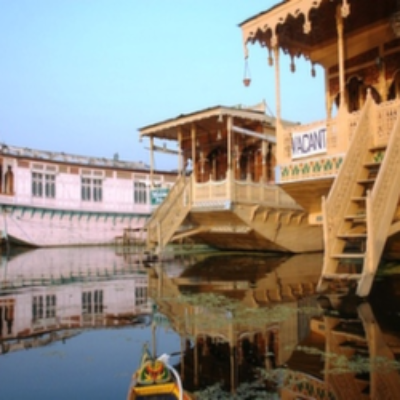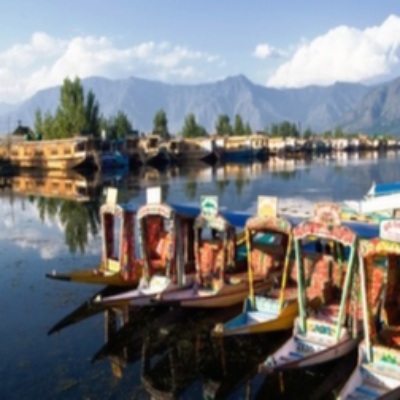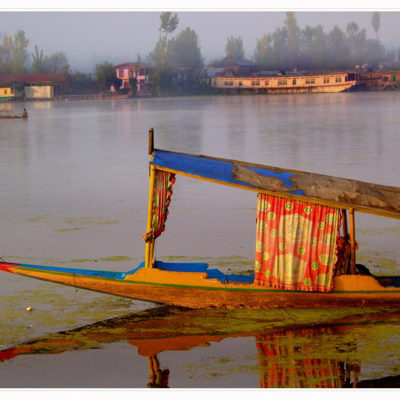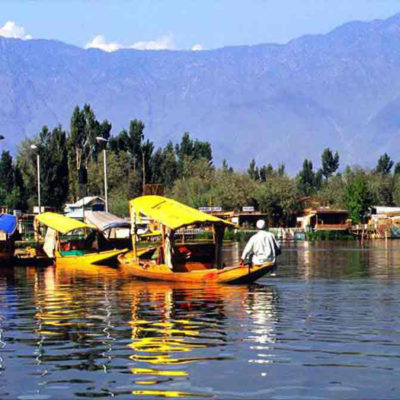DAL LAKE -GREEN WATERS-HOUBOATS-SHIKARA DRIVE-FABULOUS CONTOUR -PLEASANT BREEZE AND THE BEST OF ALL
Dal lake is the second largest in Kashmir, is integral to tourism and recreation in Kashmir and is named the “Jewel in the crown of Kashmir” or “Srinagar’s Jewel”. The lake is also an important source for commercial operations in fishing and water plant harvesting.
The shoreline of the lake is about 15.5 kilometers (9.6 mi), is encompassed by a boulevard lined with Mughal era gardens, parks, houseboats, and hotels. Scenic views of the lake can be witnessed from the shoreline Mughal gardens, such as Shalimar Bagh and Nishat Bagh built during the reign of Mughal Emperor Jahangir [6] and from houseboats cruising along the lake in the colorful shikaras.[7] During the winter season, the temperature sometimes reaches −11 °C (12 °F), freezing the lake.[5][8]
The lake covers an area of 18 square kilometers (6.9 sq mi) and is part of a natural wetland which covers 21.1 square kilometers (8.1 sq mi), including its floating gardens. The floating gardens, known as “Rad” in Kashmiri, blossom with lotus flowers during July and August. The wetland is divided by causeways into four basins; Gagribal, Lokut Dal, Bod Dal, and Nagin (although Nagin is also considered as an independent lake). Lokut-dal and Bod-dal each have an island in the center, known as Rup Lank (or Char Chinari) and Sona Lank respectively.[8][9]
At present, the Dal Lake and its Mughal gardens, Shalimar Bagh and the Nishat Bagh on its periphery are undergoing intensive restoration measures to fully address the serious eutrophication problems experienced by the lake.Dal Lake is Srinagar’s jewel, a vast, mirror-flat sheet of water reflecting the carved wooden balconies of the houseboats and the misty peaks of the Pir Panjal mountains. Flotillas of gaily painted shikaras (gondola-like taxi boats) skiff around the lake, transporting goods to market, children to school and travelers from houseboat to shore. If you want to photograph the lake, bring a long lens and a polarising filter to cut down the glare from the water.
Most visitors to Srinagar stay out on Dal Lake in one of the delightful houseboats left behind from the Raj, but landlubbers can hire shikaras for tours around the lake, visiting floating gardens and the floating flower and vegetable market. It’s a colorful spectacle, but expect plenty of attention from souvenir vendors.
Shikaras can be hired from boat stations all along the lakeshore and official rates are displayed on noticeboards. You can commission a shuttle from the Blvd to your houseboat, and an hour paddling around the backwaters will cost a fee as well, either onshore or at your houseboat




